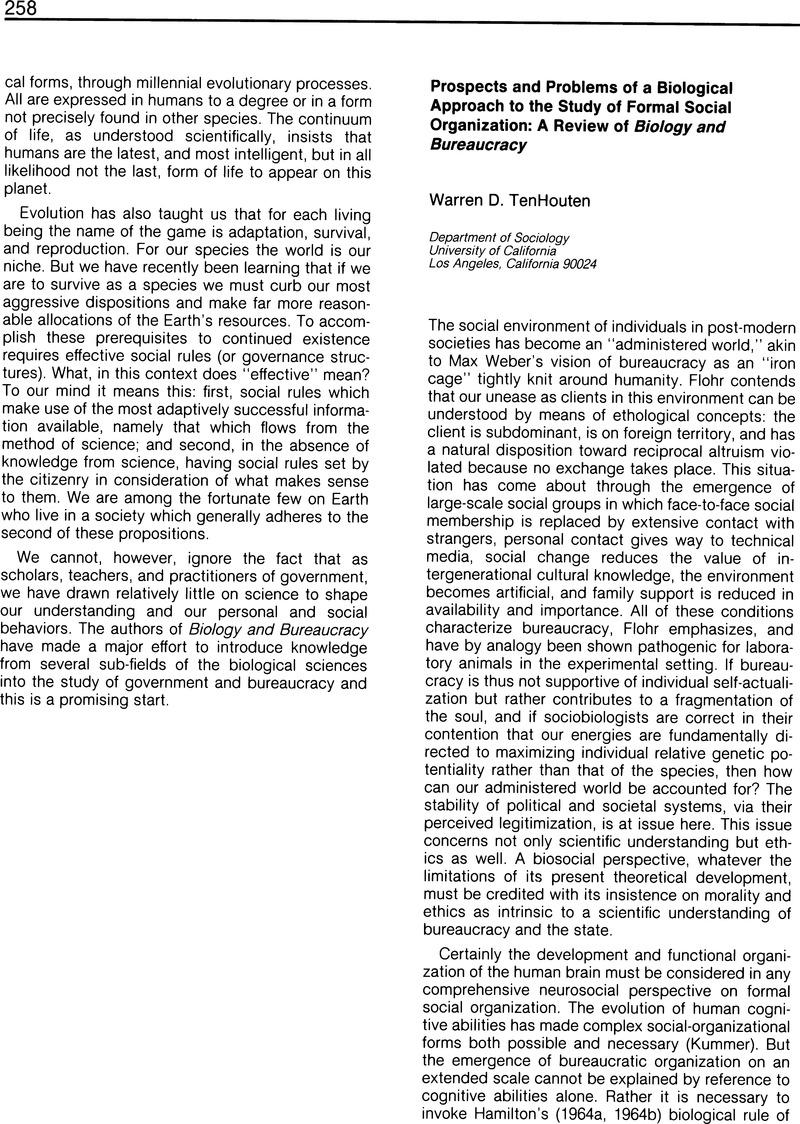No CrossRef data available.
Article contents
Prospects and Problems of a Biological Approach to the Study of Formal Social Organization: A Review of Biology and Bureaucracy
Published online by Cambridge University Press: 17 May 2016
Abstract
An abstract is not available for this content so a preview has been provided. Please use the Get access link above for information on how to access this content.

- Type
- Book Reviews
- Information
- Copyright
- Copyright © Association for Politics and the Life Sciences
References
Comte, A. (1968). System of Positive Polity, Vols. I, II, and IV; originally published 1851, 1852, and 1854. London: George Bell & Sons.Google Scholar
Doktor, R. and Bloom, D. M. (1977). “Selective Lateralization of Cognitive Style Related to Occupation as Determined by EEG Alpha Asymmetry.” Psychophysiology 14 (July): 385–387.CrossRefGoogle ScholarPubMed
Durkheim, E., and Mauss, M. (1967). Primitive Classification. Chicago: The University of Chicago Press, pp. 81–88; originally published in 1903 as “De quelques formes primitives de classification: contribution à l'étude des représentations collectives.” Année Sociologique 6 (1901–1902, Paris): 1–72.Google Scholar
Hamilton, W. D. (1964a, 1964b). “The Genetic Evolution of Social Behaviour. I, II.” Journal of Theoretical Biology 7 (07): 1–16, 17-52.Google Scholar
Mintzberg, H. (1976). “Planning on the Left Side and Managing on the Right.” Harvard Business Review 54 (July-August): 49–58.Google Scholar
Zopf, G. W. Jr. (1962). “Attitude and Context.” In von Foerster, H. and Zopf, G. W. Jr. (eds.), Principles of Self-Organization. New York: Pergamon, p. 340.Google Scholar


